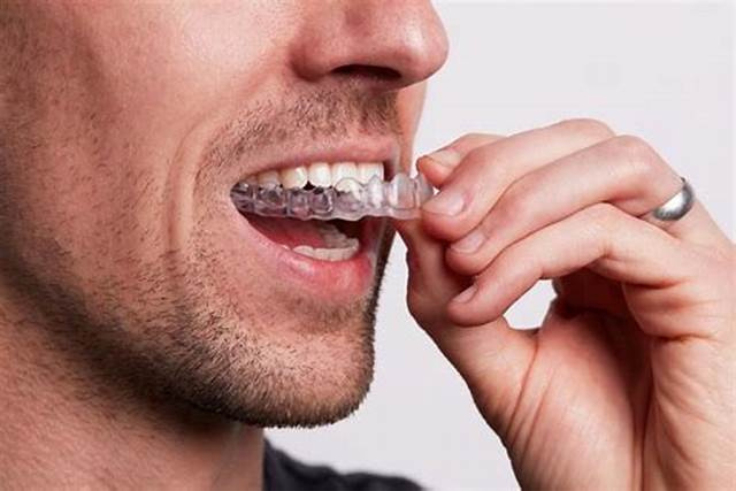Does Invisalign Hurt? Managing Discomfort and Adjustments

Invisalign has quickly become one of the most popular alternatives to traditional braces, offering a discreet and convenient way to straighten teeth. But a question many prospective patients ask is: Does Invisalign hurt?
While Invisalign is generally more comfortable than metal braces, mild discomfort can still occur—especially during the initial stages of treatment. This guide explains why Invisalign might cause temporary discomfort, how to manage it, and when to speak to your dentist.
Table of Contents
ToggleUnderstanding Invisalign Treatment
What Is Invisalign and How Does It Work?
Invisalign is a clear aligner system that uses custom-made plastic trays to gradually move your teeth into their desired positions. You wear each set of aligners for 1–2 weeks before switching to the next. Unlike metal braces, Invisalign is:
- Removable for eating, drinking, and brushing
- Nearly invisible, making it ideal for adults and teens
- Customised for precision and comfort
Is Invisalign Painful or Just Uncomfortable?
Invisalign doesn’t usually cause pain in the traditional sense, but patients often describe the experience as “tight,” “pressurised,” or “slightly sore.” This sensation is completely normal and is actually a sign that the aligners are doing their job—shifting your teeth effectively.
When to Expect Discomfort with Invisalign
Initial Fitting and First Few Days
When you first begin Invisalign treatment, your mouth needs time to adapt. You might feel:
- Pressure or aching in the teeth and jaw
- Minor tongue or gum irritation from the tray edges
- Difficulty speaking clearly for the first 24–48 hours
These symptoms usually fade within a few days as your mouth adjusts.
Tray Changes Every 1–2 Weeks
Each time you switch to a new set of trays, you may experience similar discomfort as your teeth begin moving again. This is temporary and typically lasts 1–3 days.
Attachments and IPR (Interproximal Reduction)
Some patients need small tooth-coloured “attachments” bonded to the teeth to help the aligners grip more effectively. Others may require IPR—tiny amounts of enamel reduction to make space for alignment. Both can cause brief discomfort but are crucial to a successful outcome.
Tips to Manage Invisalign Discomfort
At-Home Remedies for Pain Relief
Here’s how to ease mild Invisalign discomfort:
- Switch to a new tray at night: Sleeping through the initial pressure helps.
- Use cold compresses on your cheeks if soreness persists.
- Stick to soft foods like smoothies, soups, and scrambled eggs during adjustment periods.
- Apply dental wax to any rough tray edges to reduce irritation.
Oral Hygiene and Aligner Maintenance
Clean your aligners daily using Invisalign crystals or a mild solution to prevent bacteria build-up, which can lead to gum irritation. Brush and floss thoroughly before putting aligners back in.
Over-the-Counter Pain Relief Options
Paracetamol or ibuprofen can be used short-term if the soreness is distracting. Always follow dosage guidance and consult your GP if you have health conditions or are taking other medications.
When to Contact Your Invisalign Provider
Signs the Discomfort Isn’t Normal
Contact your dentist if you experience:
- Sharp or shooting pain (rather than pressure)
- Persistent ulcers or sores
- Cracked or poorly fitting aligners
These are uncommon but may indicate a need for professional adjustment.
How Your Dentist Can Help
A qualified Invisalign provider can:
- Smooth out sharp edges or rough spots
- Refit or remake aligners if they don’t fit properly
- Check your progress to ensure tooth movement is on track
Invisalign vs Braces: Which Is More Comfortable?
Invisalign is often considered the more comfortable option compared to metal braces, which can cause:
- Wire cuts and bracket irritation
- Frequent in-chair adjustments
- Dietary restrictions
With Invisalign, most patients enjoy a smoother experience, less need for emergency visits, and greater freedom in daily life.
Long-Term Comfort: Adapting to Your Invisalign Journey
What Patients Say After the First Few Weeks
Many patients report that their discomfort reduces significantly after the first few aligners. Your teeth, gums, and even your speech will adapt. The aligners will feel like second nature before you know it.
Psychological Benefits of Straighter Teeth
Discomfort is temporary, but the results can be life-changing. Straighter teeth contribute to:
- Greater confidence in professional and social settings
- Improved oral hygiene and dental health
- Better alignment, reducing strain on the jaw and bite
Conclusion: Your Invisalign Journey Made Easier
While Invisalign may cause brief discomfort, it’s usually mild and manageable. With proper care, support from your dentist, and a few home remedies, you’ll get through the adjustment period comfortably.
Book an Invisalign dentist appointment in London to get started with a personalised treatment plan and expert guidance for a smooth and successful smile transformation.
Recommended For You
Spread the loveMany men put their health on hold—whether due to a hectic work-life schedule, social stigma, or simply a
Spread the loveDental implants are one of the most reliable and long-lasting solutions for replacing missing teeth. But unlike quick
Spread the loveYou’ve tried whitening toothpastes, strips, and DIY kits—but your smile still doesn’t have that fresh, radiant glow. Sound



